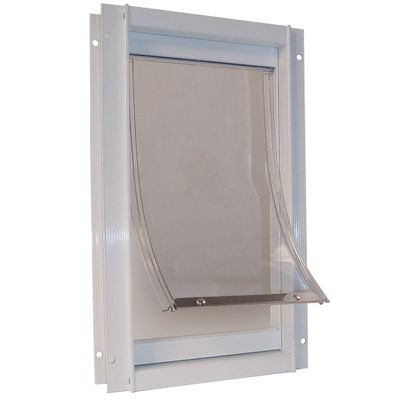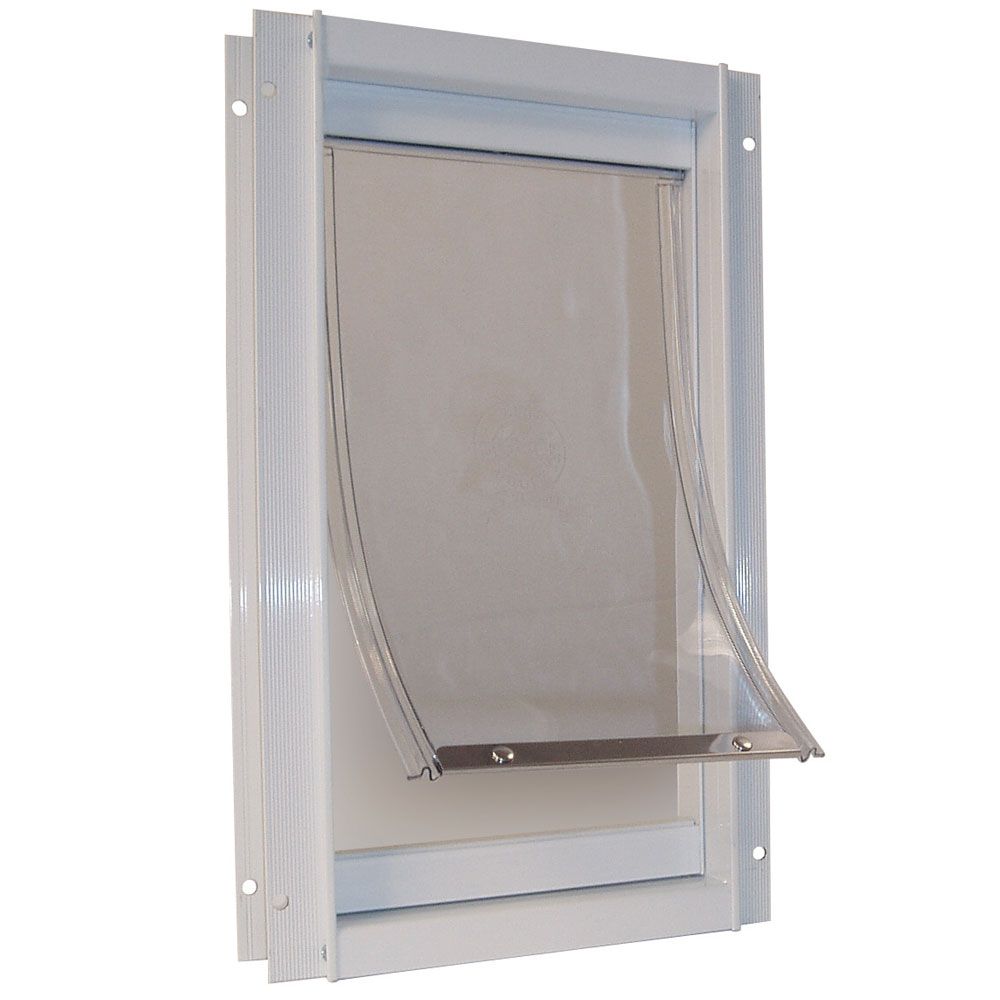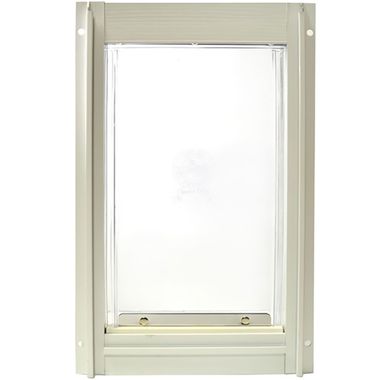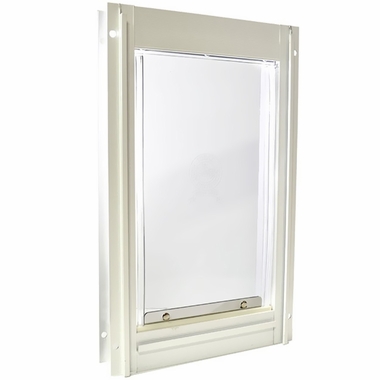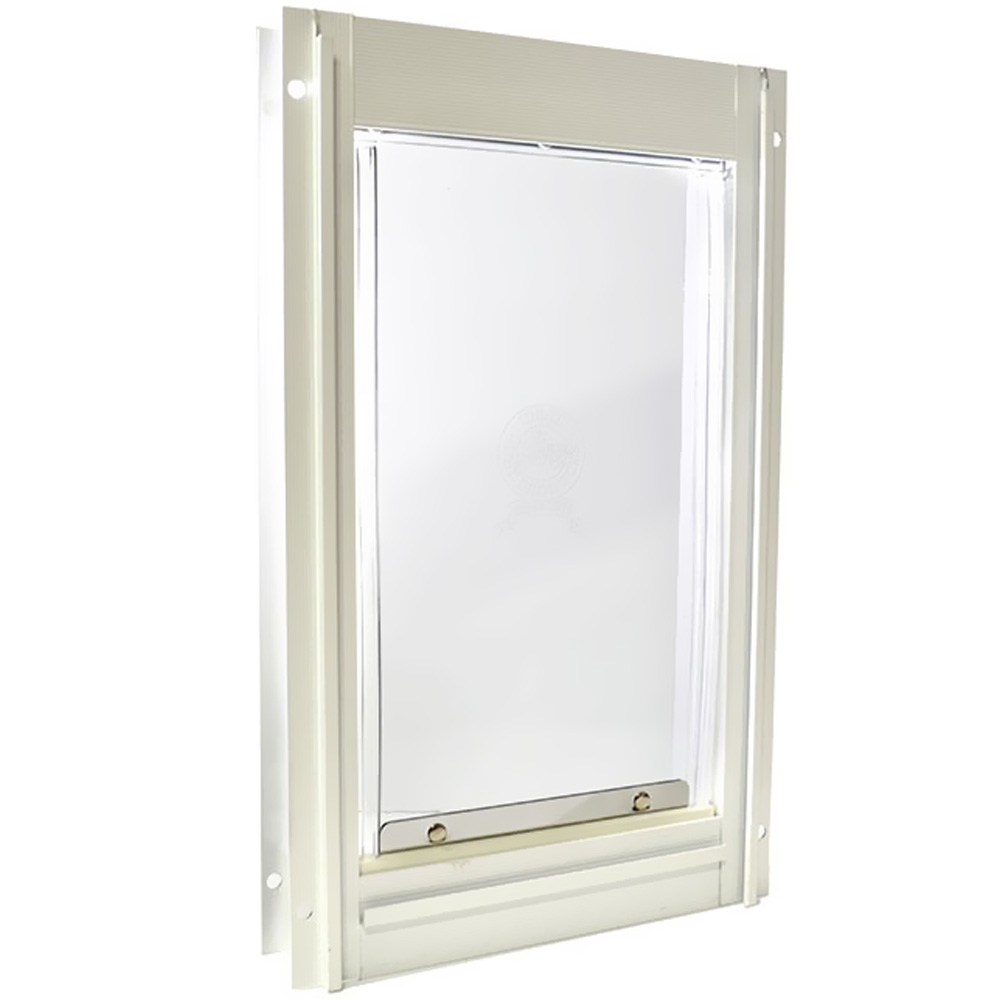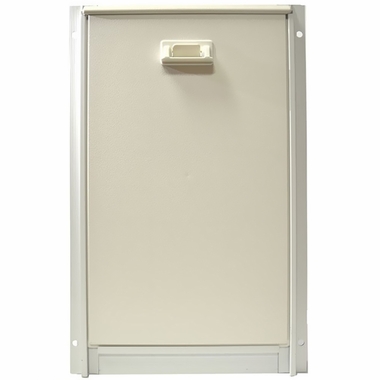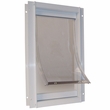Notice
All sales are Final. No returns or exchanges.
Description
Ideal Pet Deluxe Aluminum Pet Door. Give your large furry friend access to shelter day and night and get them in out of the heat, rain, and cold without any fuss or scratching at the door. Attractive, sturdy and dependable, Ideal Pet aluminum framed doors are simple to install with easy to understand instructions. Keep your pet safe and happy with an Ideal Pet door.
Key Features:
- Medium size door has an 7 In. by 11-¼ In. flap size
- Fits pets up to 35 Lbs
- Inner telescoping frame adapts to doors of ½ In. to 1-¾ In. thickness
- Thermo-insulated lockout slide effectively prevents your pet from using the door without your permission
- Floating bottom threshold creates a strong seal when the door closes
- Tamper-proof mounting system ensures that the door can't be removed from the outside
- High quality aluminum frame is finished in white for an attractive look
- Vinyl flap is flexible, safe, non-toxic and see-through
- Can be installed quickly through standard interior or exterior doors with easy-to-follow step-by-step instructions
Useful Information
Download Deluxe Aluminum Pet Door Installation Instructions
| Pet Door Style/Size | Pet Door Model # | Thickness Range of Door | Pet Door Flap Size | Pet Door Cutout Size | Recommended Weight Range of Pet |
|---|---|---|---|---|---|
| Medium | DDMW | ½" to1-¾" | 7" x 11-¼" | 7-½" x 13-¾" | 13 to 35 Lbs. |
| Extra Large | DDXLW | ½" to1-¾" | 10 ½" x 15" | 11-¼" x 17-½" | 36 to 90 Lbs. |
| Super Large | DDSLW | ½" to1-¾" | 15" x 20" | 15-½" x 22-⅜" | 91 to 120 Lbs. |
To determine the correct size door simply measure the width and height of your pet:
- Measure the widest point of your pets shoulder to obtain the width measurement.
- Measure from the top of your pets back (just behind his head) to the bottom of chest to obtain the height measurement.

- Tape Measure
- Level
- Pencil
- Hammer and Awl (or Nail)
- Drill with ¼" and ⅜" Drill Bits
- Sabre Saw
- Electric Screwdriver with Phillips Bit
- Safety Goggles
Tools Required for Installation
Deluxe Aluminum Pet Door Installation Instructions
- Template Placement - Measure your pet from floor to shoulder and add 2". Next, transfer this measurement to door and use a level to mark a straight edge at this measurement. Center the template in middle of door and align top edge of template cutout to the straight edge mark. Tape the template in place. IMPORTANT!!! Under No Circumstances Should The Bottom Edge Of The Template Cutout Be Less Than 4" From The Bottom Edge Of Your Door.
- Outline Pet Door Opening - Use a pencil to draw around the inside edge of template onto door. Mark the four, ¼" diameter outer door screw holes and center points. Next, mark the four ⅜" diameter inside edge cutout starter hole center points.
- Drilling Holes remove template and drill the four, ⅜" diameter inside edge cutout starter holes and the four, ¼" diameter outer door screw holes.
- Cutting The Opening - Using a sabre saw, begin with one of the inside edge cutout starter holes and carefully cut along te inside edge pencil line all the way around. Remove the cutout section when completed.
- Assemble and Adjustments (see Diagram 1) - Insert outside frame (A) (no flap) into opening from the outside. Make certain frame is flush with door surface. No adjustment is necessary if frame does not extend beyond inside opening. If part of the outside frame extends into inside, remove "break-off" levels on the outside frame (B) as required. Use pliers to break off a single level at a time starting at top, bottom then sides, Start at corner and bend metal inward toward center in 2" intervals. Caulking is recommended under outside frame. Place inside frame (C) (with flap) into opening from inside of door, hold in place, insert binder posts (D) through outside frame, then install screws (E) and tighten until snug. Do not over-tighten. If screw extends past outer edge of post, remove screw, cut-off accordingly, then re-insert.
- Locking Your Pet Door - Slide self-locking cover (F) into guide channel.

Note: Uneven Surfaced Doors: If your door has an uneven surface, after cutting the rough opening, build up the lowest area with a wood frame thick enough to make an even door surface. If both sides of your door are uneven, repeat the process for the other side.
Installation In Walls And Other Types of Doors
The pet door can be installed in walls, steel doors, storm doors and Bel Aire doors, however, additional materials such as wood framing, plaster, touch-up paint, longer frame screws and additional tools may be required.
- Walls: Once an opening has been made in a wall it will be necessary to build a frame to cover the exposed area between wall surfaces. Used wood screws to attach interior and exterior frame to wall surfaces. IMPORTANT!!! Whenever Drilling And Cutting Through Walls, Extreme Caution Should Always Be Taken To Avoid Gas, Electric & Plumbing Lines.
- Steel Doors: To create an opening in a steel door use a jigsaw with a metal cutting blade to cut the opening starting at pre-drilled corner holes.
- Storm Doors or Bel Aire Doors ½" thickness or less: Starting at any pre-drilled corner hole, cut out rough opening (use tin snips for storm doors.) Break off levels 1 & 2 (B) as reired (See Diagram 1).

